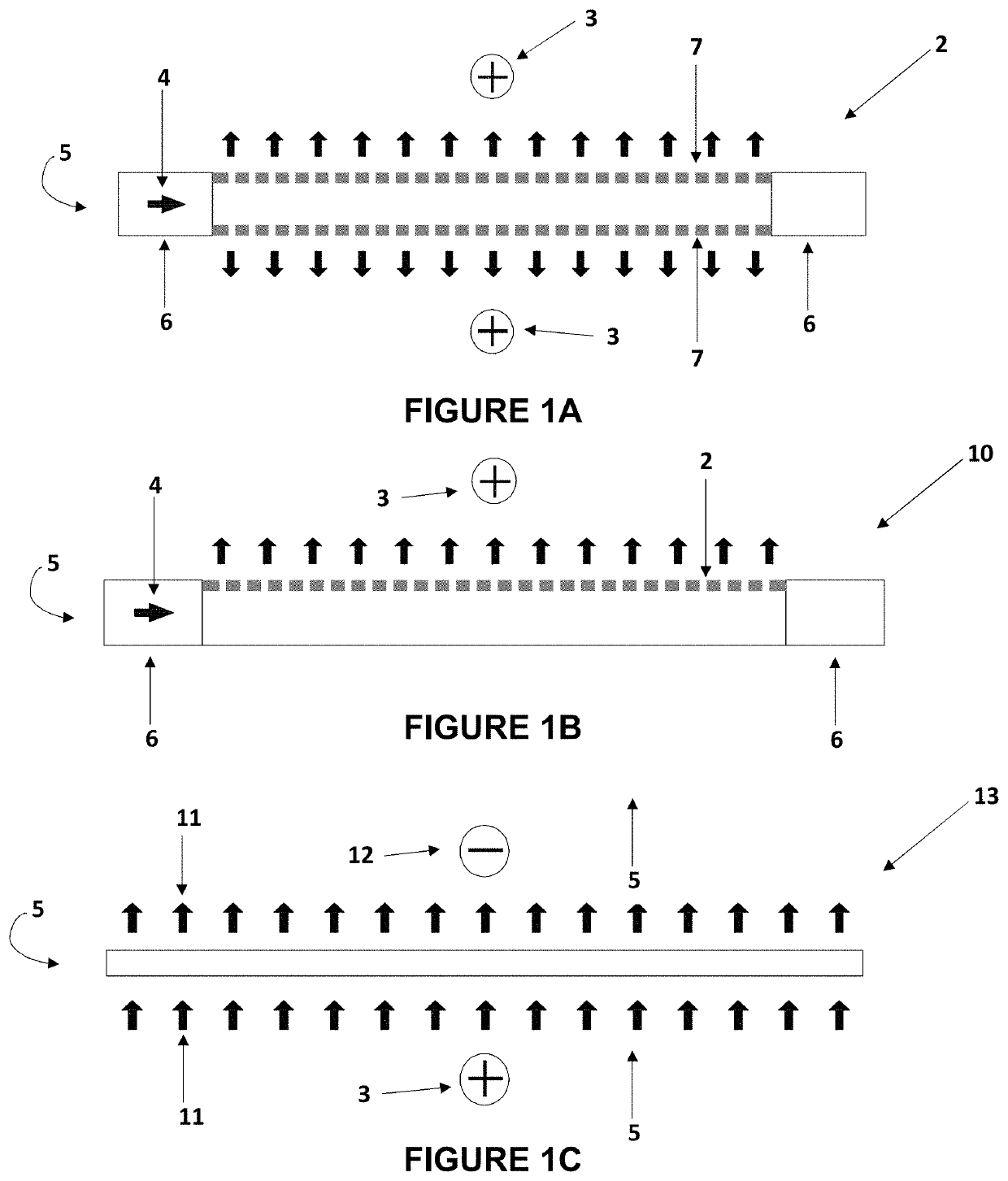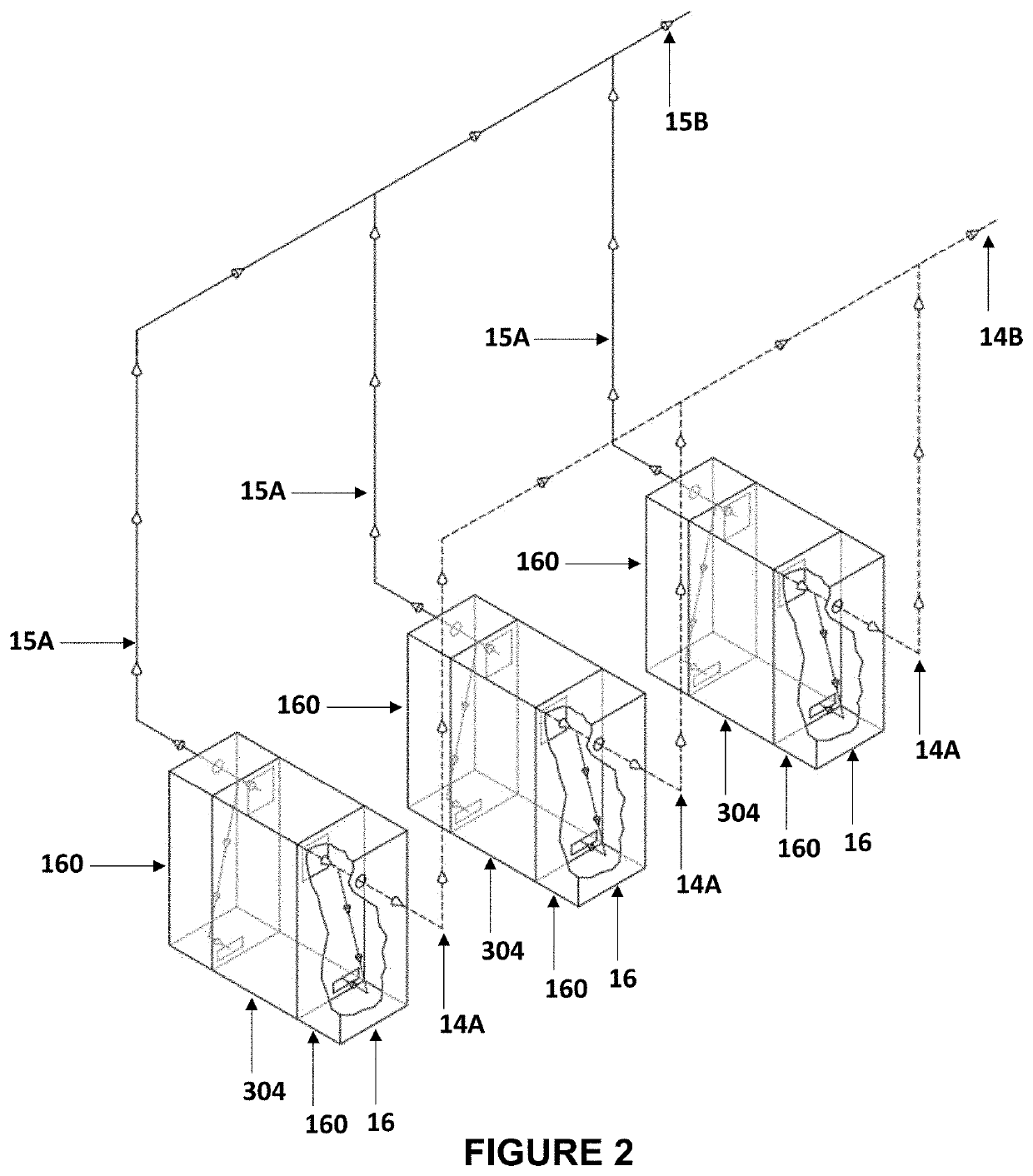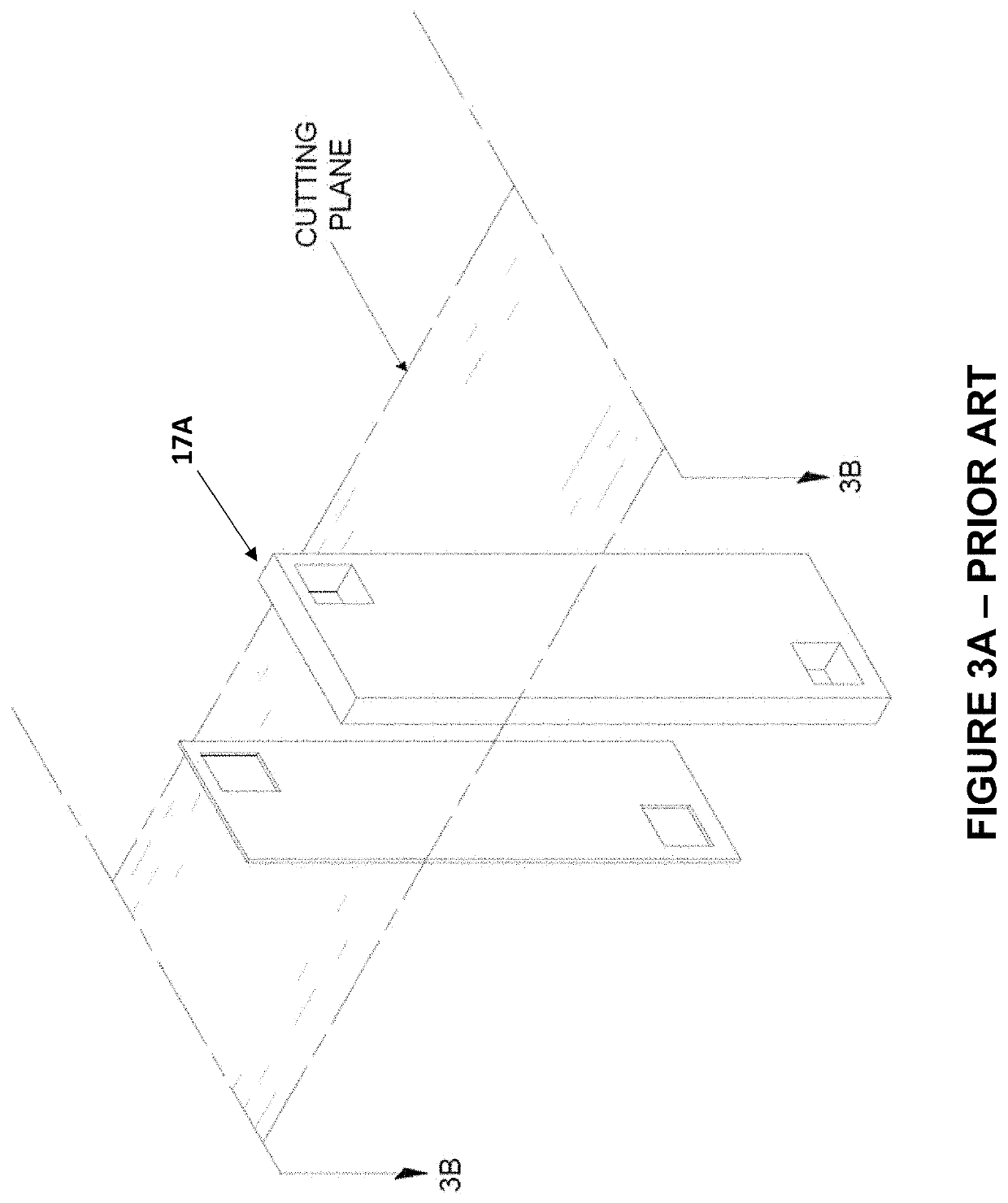This has traditionally led to higher
voltage losses due to higher electronic resistance
voltage loss, and thus lower efficiency, for unipolar and monopolar cells as compared to bipolar cells for similar current densities and similar electroactive structures.
Historically, the contribution of electronic resistance to
cell voltage losses in traditional unipolar and monopolar designs presented the greatest barrier to the continued commercialization of these technologies.
However, the utilization of higher current densities does not in itself lead to improved efficiency or improved
plant economics.
However, because of the high part count, complex assemblies, resistance within the conductive pathways of a single cell, and difficulties inherent in changing the surface area per cell, “tank type” unipolar water electrolysers, such configurations were generally replaced by comparatively more efficient “filter press type” configurations over time.
However, these “tank type” designs eliminated need for mixing electrolyte between cells and the related by-pass currents and very
high potential differences across multicell arrays.
However, while the monopolar double plate design of U.S. Pat. No. 6,080,290 overcame the cited prior limitations of the unipolar tank type cell, the electrolyser of U.S. Pat. No. 6,080,290 was limited by the design of its “end assemblies and
fluid management system” in other words, the components positioned on opposing ends of the filter press wherein the stack is physically terminated, allowing for the filter press to be clamped and interact with outside systems.
However, during
start up and
shut down, the presence of reverse currents within the shared electrolyte
pool spanning multiple electrochemical cells would induce
corrosion of even the cathodic end boxes, should they be provided from a preferred inexpensive material such as
carbon steel.
Further, the end boxes of U.S. Pat. No. 6,080,290 are not optimally designed such that they can be readily and cheaply
nickel plated, as they comprise crevices and complex geometries being of one integral tube, making them altogether expensive to protect from
corrosion, and limiting the use of cheap materials in
cathode regions which may otherwise be employed in
alkaline water electrolysis processes.
The economics of the design of U.S. Pat. No. 6,080,290 are therefore rendered undesirably expensive in view of its end box and
fluid management system design.
Further, the endboxes were not themselves an integral part of the monopolar filter press, being positioned external to each
electrochemical cell stack, thus consuming excess spatial
footprint beyond the dimensions of the core filter press.
With this construction, there are additional limitations imposed for the desired use case of large-scale
alkaline water electrolysis.
As one example, there are limitations imposed by the mixing of electrolytes between electrochemical cells within the same filter press stack.
The electrolyte is exposed to the summation of all voltages across each individual cell within the filter press, increasing the likelihood of
corrosion currents on inexpensive materials such as
carbon steel.
The necessity of applying expensive materials to
cathode components due to corrosion currents inherent from the bipolar configuration increases the cost of scaling the
system.
Additionally, there are practical limits on the surface area of a single bipolar cell.
Practical surface area limits are imposed as the electrolytic reactants and products need to distribute throughout the bipolar
electrode structure, while balancing limits in practical manufacturing techniques as well as transportation of a filter press from its point of fabrication to the operating site.
Furthermore, multiple bipolar filter presses are not practically employed in parallel with each other to increase this amperage, due to the differences in resistivity between each filter press.
Therefore, for the purpose of creating large surface area electrolysis cells, bipolar cells are not practical.
Finally, the bipolar electrolyser module of Stemp in U.S. Pat. No. 8,308,917 is optimized for a bipolar filter press of a substantially circular configuration, and could not be functionally applied to a unipolar or monopolar filter press in a substantially rectangular configuration.
This results in a more intensive design.
However, this cavity is difficult to fabricate due to its placement within the design.
The unitary construction of the end piece makes
nickel platting difficult, due to the shape and the internal chambers.
Furthermore, the unitary construction makes it difficult to add mechanical support members, and internal tubing, and also increases the difficulty in maintenance.
In addition, the unitary construction of this end assembly does not allow for separate sealing flanges, and has limitations to size and shapes.
By the year 2020, the cost of implementing renewable forms of
electricity production through technologies such as wind turbines and
photovoltaics has dramatically fallen from historical levels.
 Login to View More
Login to View More 


